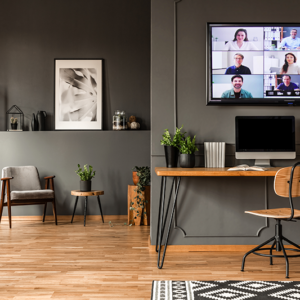How AVNation goes about producing a podcast
When people find out what I do for a living, a common question is, how do you do it? Producing a podcast has a few common components which I’ll go into below. Really, though, it’s a personal decision. Today I’m going to go over my template for producing a podcast plus tell you how we do it at AVNation.
Why?
Why, oh why, are you putting yourself through this misery? What I mean to say is, that producing a podcast is a lovely pastime that everyone should do. Seriously, it’s a ton of work. But, that’s not the reason for the “Why”. The why, in this instance, is why are you doing it? You could use a podcast to further an idea, sell a product, or increase your visibility. Regardless of the reason, you need to have a Why.
Yes, Simon Sinek has written all about this before. Go read his book. It’s pretty good. Before you even begin to press record, you need to have a reason for doing this. If you don’t, you’ll stop at the first sign of frustration. And there will be plenty of times that are frustrating. Your Why will keep you focused and motivated.
How are you Producing a Podcast?
Is it a video or just an audio production? This matters in the type of gear you’re going to need. For an audio-only production get a good microphone and an excellent set of headphones. Starting with the end in mind is crucial here.
Yes, I’m combining both video and audio productions together in defining and producing a podcast. Any form of regularly updated content, to me, is a podcast generally. That means your favorite TikTok or YouTube star is, in essence, a podcaster. You can disagree if you’d like. Your choice. But these all fall under a general umbrella of podcasting. As such, you need to decide what format your show will take.
What’s your schedule?
How often will you be putting out new content? Consistency is key to building, and keeping an audience. If you decide to make a weekly podcast that publishes every Tuesday at 9 am ET then you better do it every Tuesday. It’s a contract you make with your audience. Miss one, or several, and you run the risk of losing the listeners you’re trying to reach.
Producing a podcast is a constant grind. That isn’t to say it isn’t fun and rewarding. It’s that too. But it’s a grind for the week in, week out. Once you have your schedule down, get at least six episodes mapped out. This means getting your guests set up, the questions, and any other form of content you need to make it happen. This way when things go sideways, and they always do, you’ll have a bit of margin to adjust instead of scrambling at the last minute.
Microphones for Producing a Podcast

Now we get to the tech. The first thing you need is a good, quality, microphone. I have my biases and I’m not going to hide them here. My favorite mic for producing a podcast is the one I use now, a Shure SM7B. Yes, Shure is a sponsor of AVNation but became one after I switched over to their microphone. Before the SM7B I used an EV20. These are both XLR mics that need an audio-to-digital converter to get them into a computer to record the audio.
Mics that have built-in A/D converters are Blue Yeti, Rode, and Shure MV7. These are all fine mics. But if you want the best quality, get a professional microphone and then put it through an A/D converter. This allows you to get the best sound and that is crucial for your audience.
Video and the Podcast Star

Should you decide to go down the video route, you’ll need a camera. Yeah, I’m stating the obvious much like the mic. Jabra has an excellent one in the Panacast 20 and 50. The Logi Brio is a high-quality camera that is just under $200 retail. Poly has excellent cameras as well.
What we use at AVNation is on high-end, but it works for us. Start with a Vaddio RoboSHOT20. This is a PTZ camera that is controlled by the Vaddio AV Bridge MatrixMIX and the MatrixMIX production switcher. It works for our workflow because of the preset PTZ recalls, white balance recalls, and the ability to stream from the MatrixMIX natively. The Vaddio AV Bridge MatrixMIX system is an all-in-one solution for producing a podcast.
Software
Unless you’re going to upload the unedited version of your discussions, get yourself software that allows you to edit the audio and video. We use the Adobe Creative Suite for everything here. That means both Audition and Premiere Pro. If you don’t have the budget yet for that, Audacity is a great free option for editing the audio.
Accessorize
Once you get established, or you want to start with a bang, get yourself some lighting. Read up on three-point and four-point lighting. These are basic formulas for getting the most out of your image and not making you look like you are stuck on the wall.
Another fancy accessory is a video wall. AVNation uses an Absen Acclaim 1.2 Plus video wall. This allows us to have a pretty tight pitch, the distance between pixels, and looks nice on a video. Installing the video wall will require a professional AV team but running it is straightforward. You need a video source in the video processor. We use a micro-PC.
Get started
The hardest part about producing a podcast is getting started. No, really. You can have everything down on paper just like you’d like it but it will stay there until you go for it. So, go for it. Reach out to your immediate network for guests and ideas. Once you get the ball rolling it’s harder to stop. Making a podcast is incredibly rewarding and fun. Just go out there and get going.









